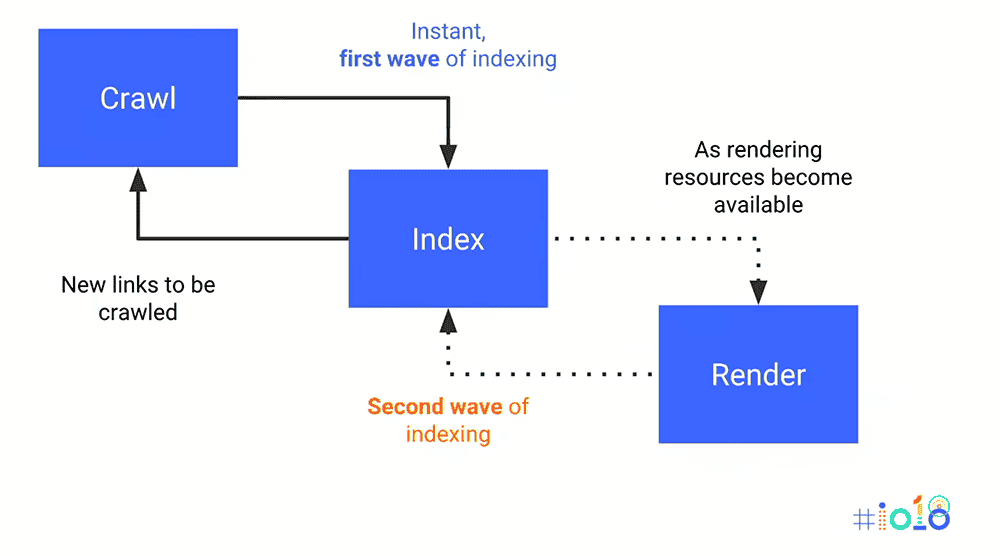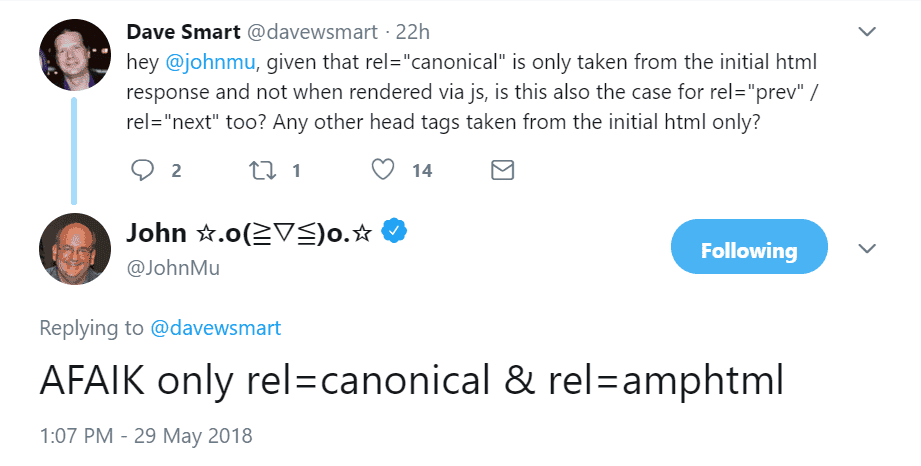Find out how to audit your brand for AI search visibility in July’s webinar with Lily Grozeva. Audit your brand for AI search visibility - Lily Grozeva. Sign up now!

This means that the URL in question has a an amphtml link element which is only present in the rendered DOM, and is not present in the source HTML.
Search Engines have traditionally crawled websites only using source HTML, and the 'crawling and rendering era' is only in its infancy. Google has the most sophisticated setup, which is a two stage indexing process (Image below from Google I/O 2018).

The important thing to note here is that the initial 'first wave of indexing' is based on the source HTML. Further, Google's John Mueller clarified on Twitter that rel=amphtml is only processed from this 'first wave', and they don't take into account AMP links that are added or changed during the rendering process (i.e. 'the second wave').

This Hint will trigger for any internal URL which contains a amphtml link element in the HTML when Sitebulb renders it using headless Chrome, but is NOT present in the source HTML.
Note: this Hint is only checked if the Chrome Crawler is selected during the audit setup, and AMP is selected from the audit options.
Consider the URL: https://example.com/page-a
The Hint would trigger for this URL if it had a amphtml link in the <head> when rendered;
<link rel="amphtml" href="https://example.com/page-a/amp">yet no amphtml link when not rendered.
The first thing to note is that Sitebulb WILL carry out the normal AMP analysis even when the amphtml link is only found in the rendered DOM - but if this Hint is flagged you will need to resolve it for AMP to work correctly.
Google have stated categorically that the rendered AMP link is not taken into account, which may mean that AMP pages are not picked or used by Google.
In order for the amphtml link to be properly recognised, use one of the following solutions:
Find, fix and communicate technical issues with easy visuals, in-depth insights, & prioritized recommendations across 300+ SEO issues.
Get all the capability of Sitebulb Desktop, accessible via your web browser. Crawl at scale without project, crawl credit, or machine limits.